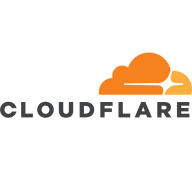

Find out what your peers are saying about Cloudflare, Radware, NETSCOUT and others in Distributed Denial-of-Service (DDoS) Protection.
WordPress security can be tricky, and that's where Cloudflare can be absolutely helpful for small businesses.
For the small project I was working on, using the basic tier provided a huge improvement at zero cost.
In terms of return on investment with Cloudflare, it costs my time to set them up, but basically once they're set up, it's done.
The service generates a low rate of false positives, reducing the overhead of managing false positive events.
This would help us address issues promptly, especially during unforeseen events like DDoS attacks.
Cloudflare does not offer hands-on technical support to fix customer problems but rather a self-service model.
The key factor is the language in which the support is offered, which, in this case, is in Thai.
There is a lack of SLA adherence, and third-party partners do not provide prompt responses.
The service response times are aligned with standards, responding within a few hours based on the problem's criticality.
The support is quite difficult to access promptly.
It is a SaaS tool, but the fact that they have workloads deployed across the world proves that it is a highly scalable tool.
The tool offers very good performance, even during high-traffic periods.
I rate the solution’s scalability an eight out of ten.
Wildfire is highly scalable.
Palo Alto Networks WildFire is scalable, and I give it a nine for scalability.
For DDoS protection, I would not recommend Cloudflare.
I rate the solution’s stability an eight out of ten.
The service is very stable with no impacts during high-traffic periods.
It performs filtering, malware blocking, and scanning.
The solution is scalable and stable.
There's a need for improvement in areas like AI-based DDoS attacks and Layer 7 WAF features.
Despite these challenges, overall, Cloudflare remains the preferred solution compared to Azure, AWS CloudFront, and Google Cloud Armor.
The timing aspect can lead to it being considered overpriced. This is a particular concern we have with Cloudflare, as they may struggle with accurately detecting the client.
The dashboard should provide better visibility, especially in showing how many files are sent to Wildfire and their findings.
It is a very good product.
The support could be improved, as it takes a while to get assistance from the vendors.
That's where Cloudflare shines for smaller businesses – it's ten times cheaper than Akamai.
I find it to be cheap.
I think they should consider reevaluating the pricing for support, as it can be quite high.
I would rate it an eight out of ten in terms of affordability.
The most valuable features of the solution are performance and security.
Techniques like minification and image compression reduce the size of assets, leading to better performance and faster user load times.
The solution has been able to compare it to the market, and I think the product has taken great strides in automating quite a bit of things, and they use a lot of AI.
Integrating Palo Alto Networks WildFire with various security protocols similar to a firewall has significantly improved the overall threat detection capabilities in our organization.
The most valuable feature of Wildfire is its sandboxing capability for examining suspicious files or locations.
| Product | Market Share (%) |
|---|---|
| Cloudflare | 18.8% |
| Arbor DDoS | 11.4% |
| Radware DDoS | 8.5% |
| Other | 61.3% |
| Product | Market Share (%) |
|---|---|
| Palo Alto Networks WildFire | 10.7% |
| Microsoft Defender for Endpoint | 9.0% |
| Fortinet FortiSandbox | 8.7% |
| Other | 71.6% |


| Company Size | Count |
|---|---|
| Small Business | 46 |
| Midsize Enterprise | 8 |
| Large Enterprise | 25 |
| Company Size | Count |
|---|---|
| Small Business | 36 |
| Midsize Enterprise | 17 |
| Large Enterprise | 28 |
Cloudflare is a highly-regarded Content Delivery Network (CDN) and a Distributed Denial-of-Service (DDoS) protection solution. The robust global connectivity cloud platform that is Cloudflare ensures users are able to connect to the Internet quickly, securely, and reliably. Cloudflare is one of the world's largest networks in the marketplace today. Using Cloudflare, businesses, educational entities, NGOs, vloggers, bloggers, and anyone else with an internet presence can experience more secure, faster websites and applications.
Currently, there are millions of Internet locations on Cloudflare, and the Cloudflare network
continues to grow every day by the thousands. The solution is able to fulfill the requests for
millions of websites seamlessly and serves on average 45 million HTTP requests per second.
Cloudflare has safe, secure data centers in close to 300 cities worldwide to ensure every
client request is filled as quickly as possible. It is Cloudflare’s edge network that makes this
possible by keeping content and other services as close to each client as possible, so the
information requests are always only seconds away.
Many organizations that work in democracy, civil society, human rights, or the arts are able to
access Cloudflare's highest levels of protection for free via Project Galileo. Additionally, official
election websites can be secured from hacking and fraud through Cloudflare’s Project
Athenian, also at no additional cost.
Cloudflare can also help organizations of all sizes develop a robust zero-trust strategy to
ensure the highest levels of productivity and profitability. Employees, stakeholders, and end users have a greater level of satisfaction and overall improved user experience, which can, in
turn, result in higher revenues and overall ROI. Zero-trust and BYOD (bring your own device)
access ensure end users and employees always have the best resources and technology
available to them at all times.
Cloudflare benefits
Cloudflare has many benefits. Some of its most valuable benefits include:
- Faster load times
- Robust DNS security
- Intuitive cloud Web Application Firewall (WAF)
- Free universal SSL
- Image enhancement
- Automatic browser caching
- Next-generation cloud load balancer
- Accelerated Mobile Pages (AMP)
- Rate limiting
- Minification
- Zero-trust capabilities
- Cost-effective
- Reduced carbon footprint
Reviews from real users
“Many websites require an SSL certificate because they sell stuff and want SSL. Cloudflare
comes with an SSL certificate built in. It's automatic. You sign yourself up for Cloudflare, and
an SSL certificate automatically protects your website. If you have a connection between your
website and your host, the server, Cloudflare, and the host, you don't necessarily need a
certificate.” Spencer M., Owner at Tech Exchange
“What I like best about Cloudflare is that my company can use it to trace and manage
applications and monitor traffic. The solution tells you if there's a spike in traffic. Cloudflare
also sends you a link to check your equipment and deployment and track it through peering,
so it's a valuable tool.” Daniel P., Network Engineer at Ufinet
“The most valuable feature of Cloudflare is the GUI. You are able to control the solution very
well through the interface. There is a lot of functionality that is embedded in the service.” PeerSpot user, Competence Center Manager at a tech services company
Palo Alto Networks WildFire is a highly effective cloud-based advanced threat protection (ATP) solution that organizations in a wide variety of fields trust to help them keep safe from digital threats. It is designed to enable businesses to confront even the most evasive threats and resolve them. It combines many techniques to maximize the level of threat protection available to users.
Palo Alto Networks WildFire Benefits
Some of the ways that organizations can benefit by choosing to deploy WildFire include:
Proactive real-time threat prevention. Organizations that utilize WildFire can take a proactive approach to their network security. Wildfire’s security scanning software is supported by powerful automation that enables it to run 180 times faster than other similar solutions. It also leverages machine learning to spot and address two times more malware monthly than its competitors. Users can solve issues as they arise, which prevents them from suffering severe harm.
A holistic approach to security. WildFire leverages many of the security features and characteristics that can be found in some of the most effective security solutions in a way that provides users with a powerful protective blanket. It combines such things as machine learning, dynamic and static analysis, and a custom-built analysis environment, and enables users to cover many different potential avenues of attack. In this way, organizations can easily detect and prevent even the most sophisticated threats from harming them.
Reduce overhead costs. Using WildFire cuts the expenses that a business incurs. Its architecture is based in the cloud and, as a result, users do not have to purchase hardware to run it. Additionally, those users do not have to pay anything more than a product subscription fee. They can scale it up as they wish and incur no additional costs.
Palo Alto Networks WildFire Features
Some of the many features WildFire offers include:
Third-party integrations. WildFire gives users access to integrations that can enable them to combine Wildfire’s security suite with outside tools. If an organization thinks that they are missing something, they can easily use Wildfire’s third-party integrations to bolster their capabilities. These integrations can connect to many different types of tools, like security information or event management systems.
URL filtering. Organizations can use a URL filtering feature to safeguard themselves against known threats. When this feature is active, it will scan for traffic coming from specific URLs that are known to be malicious. This keeps them one step ahead of those threats that they know about.
Deep analytics. Wildfire comes with the ability to provide users with a detailed analysis of any threat that it finds across all of their network environments. It gives users insight into everything from their natures to the actions that they have performed.
Reviews from Real Users
WildFire is a solution that stands out when compared to its primary competitors. Two major advantages that it offers are the high speeds at which it can analyze network traffic for threats and the accuracy with which it can pick out genuine threats from false positives.
Ahmad Z., the principal consultant at Securelytics, writes, “The analysis is very fast. The intermittent is a millisecond and has a speedy response time.”
Christopher B., the senior systems administrator at a government agency, says, “It gives a more accurate assessment of a virus in terms of whether it's truly a virus, malware, or a false positive. We have some legacy software that could pop up as being something that is malware. WildFire goes through and inspects it, and then it comes back and lets us know if it's a false positive. Usually, when it finds out that it's not a virus, it lets us know that it's benign, and it can exclude it from that scan, which means I don't even have to worry about that one popping up anymore.”
We monitor all Distributed Denial-of-Service (DDoS) Protection reviews to prevent fraudulent reviews and keep review quality high. We do not post reviews by company employees or direct competitors. We validate each review for authenticity via cross-reference with LinkedIn, and personal follow-up with the reviewer when necessary.